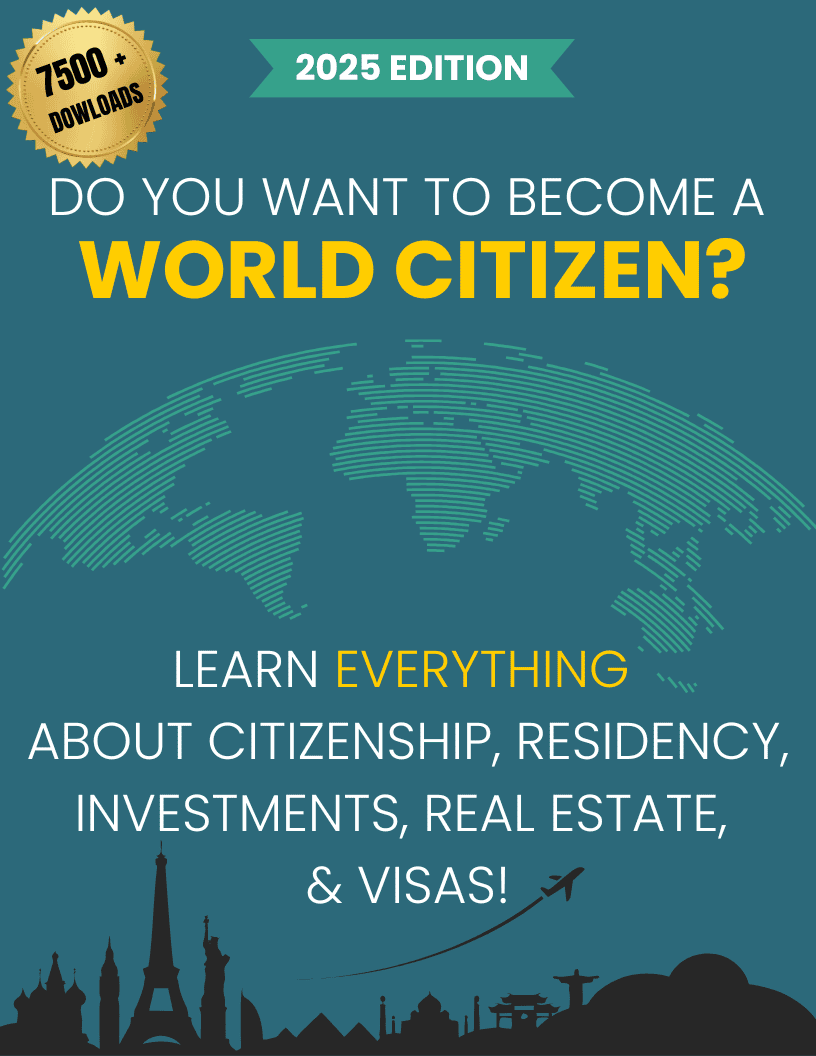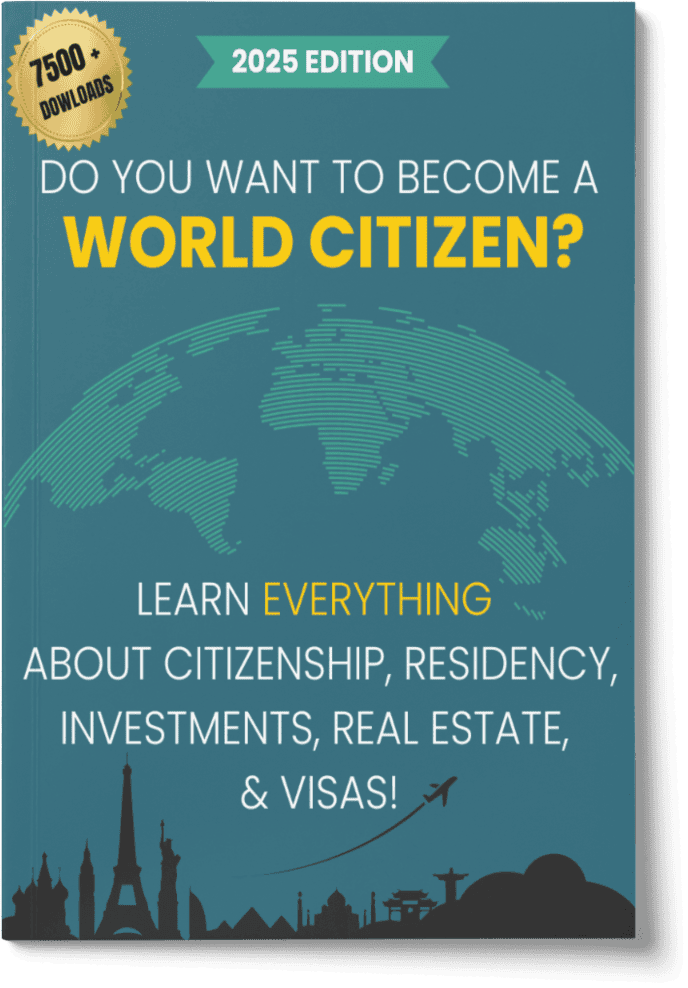Which Australian Retirement Visa Is Right for You?
Boost Your Freedom Without Compromise.
- Who offers the CHEAPEST program available.
- Who offers the BEST program available.
- What you need to qualify?

- Only the Investor Retirement Visa (Subclass 405) remains open to new applicants - Applicants must be at least 55 years old, have no dependents (aside from a partner), be fully self-funded, and make a designated investment, typically A$750,000 (metro) or A$500,000 (regional), in a state or territory entity1.
- Monthly income requirements start at A$65,000 for individuals (and A$82,000 for couples), with some regions permitting A$50,000 individuals - These income thresholds ensure applicants can maintain their standard of living without recourse to Australian social welfare. The visa is valid for four years (renewable) with limited Australian work rights of up to 40 hours per fortnight2.
- Comprehensive private health insurance is essential throughout the visa duration - Applicants must hold insurance comparable to Medicare, as retirees on this visa are not eligible for Medicare or reciprocal health care arrangements. Maintaining valid coverage is a visa condition, and failure to do so may lead to cancellation.
Australia has become an increasingly attractive retirement destination for individuals seeking a high standard of living, political stability, and a climate that supports year-round outdoor living. For retirees from the UK and other countries, Australia offers a blend of modern infrastructure, quality healthcare, and a relaxed lifestyle.
To support this growing interest, the Australian government introduced the Investor Retirement visa (subclass 405), a temporary visa tailored for self-funded retirees aged 55 and over who wish to reside in Australia long-term without relying on public funds.
In This Article, You Will Discover:
This guide provides a comprehensive overview of the eligibility criteria, financial requirements, visa conditions, and long-term considerations for retirees evaluating Australia as their preferred destination.
*Disclaimer: All amounts quoted in this article were correct and accurate at the time of publication and may have shifted since.
- Who offers the CHEAPEST program available.
- Who offers the BEST program available.
- What you need to qualify?
 Free Consultation
Free Consultation Easy to Use
Easy to Use 100% Safe & Secure
100% Safe & Secure
What Is the Australian Retirement Visa?
The Investor Retirement Visa (Subclass 405) is a temporary visa designed for self-funded retirees aged 55 or older who wish to live in Australia.
Applicants must not have any dependents other than a partner and must make a designated investment in a state or territory government bond as part of their visa conditions.
Renewal is possible every four years as long as the investment and income criteria continue to be met. This visa does not offer a direct path to permanent residency3.
Duration and Renewal
- Initial visa grant is for four years.
- Each renewal requires the retiree to maintain their investment and meet income thresholds. After the first renewal, investment levels may be reduced by up to AUD 250,000, depending on the state4.
State-by-State Investment and Income Requirements
| State/Territory | Investment (metro) | Investment (regional) | Annual Income Requirement |
|---|---|---|---|
| Victoria | AUD 750,000 | AUD 500,000 | Not specified5 |
| New South Wales | AUD 500,000 | AUD 250,000 | Not specified6 |
| South Australia | AUD 530,000 (AUD 550,000 if partnered) | Regional same | AUD 50,000 combined net income7 |
| Other states/territories | Typically AUD 750,000 (metro) | Variable | Minimum AUD 65,000 individual / AUD 82,000 couple in metro; AUD 50,000 individual in regional areas8 |
These thresholds reflect the state-based sponsorship requirements, which supplement the Department of Home Affairs overall visa eligibility.
Who Can Apply for an Australian Retirement Visa?
The Investor Retirement Visa (subclass 405) is designed for individuals aged 55 and over who wish to retire in Australia using their own financial resources.
Applicants must not have any dependent children, and if applying with a partner, both must meet health, character, and financial criteria.
To be eligible, applicants must receive sponsorship from a participating Australian state or territory. This sponsorship is essential and comes with specific investment and income requirements that vary slightly by region.
Financial Requirements
Applicants must make a designated investment in state or territory government bonds and demonstrate a minimum annual income. T
he following table outlines typical requirements by region:
| Location | Minimum Investment | Minimum Annual Income |
|---|---|---|
| Metropolitan Areas | AUD 750,000 | AUD 65,000 |
| Regional Areas | AUD 500,000 | AUD 50,000 |
On the first renewal, the investment amount may be reduced by AUD 250,000 if the applicant stays in the same location9.
Income must come from secure and ongoing sources such as pensions, superannuation, investments, or rental income. Employment cannot be the primary source of income.
Health, Character, and Insurance
All applicants must:
- Undergo a full medical examination
- Provide police clearance certificates from countries lived in for 12 months or more
- Hold private health insurance equivalent to Medicare throughout their stay
Investor Retirement Visa holders are not eligible for Medicare, and failure to maintain health insurance can lead to visa cancellation10.
Work Rights and Residency
Holders of this visa can work up to 40 hours per fortnight, although the visa is intended primarily for retirement. The visa is valid for four years and can be renewed indefinitely, provided the financial, health, and sponsorship conditions continue to be met.
This visa does not lead to permanent residency or citizenship. However, retirees with children who are Australian citizens or permanent residents may explore family-related permanent visa options, such as the Contributory Parent Visa (subclass 143).
What Are the Types of Australian Retirement Visas?
Australia has issued two primary retirement visa categories. However, the subclass 410 visa is closed to new applicants, while subclass 405 remains open only to existing holders (as of mid-2025
| Visa Type | Status | Key Features |
|---|---|---|
| Subclass 410 (Retirement) | Closed to new applicants since July 200511 | • Temporary visa for retirees 55+ with an existing 410 grant • No limit on working hours • Visa can be renewed for up to 10 years per grant • Does not lead to permanent residency |
| Subclass 405 (Investor Retirement) | Closed to new applicants since June 2018, but renewals allowed for existing holder | • Requires designated bond investment (e.g., AUD 750,000 metro / AUD 500,000 regional) • Work rights capped at 40 hours per fortnight • Four-year validity per term, renewable with reduced investment • No direct pathway to permanent residency |
Subclass 410: Retirement Visa
The subclass 410 visa was originally designed for retirees aged 55 or older to visit and reside in Australia temporarily.
Since July 2005, it has been restricted to renewals for existing visa holders and their partners.
Important details include:
- It grants unlimited work rights.
- On renewal, the visa duration can extend up to 10 years per grant.
- Yet, this visa does not provide a pathway to permanent residency or citizenship.
Subclass 405: Investor Retirement Visa
The subclass 405 visa remains available only to existing holders, enabling them to renew their visa by meeting ongoing investment and income conditions.
Key conditions include:
- A designated investment required in government bonds.
- Work rights are restricted to 40 hours per fortnight.
- While it provides four-year residence, it offers no direct route to permanent residency.
Both visa subclasses are temporary and invitation-only to current holders. The 410 visa allows more flexible work but has been closed to new applicants for nearly two decades.
The 405 visa focuses on self-funded investment retirees but restricts work hours and is also closed to new applications.
Neither visa directly leads to Australian permanent residency; retirees typically explore family-based routes such as subclass 143 afterward.
How Much Does It Cost to Retire in Australia?
Retiring in Australia requires careful financial planning beyond upfront visa investments. Consider three key expense areas: cost of living, visa-related expenses, and healthcare insurance.
Cost of Living
According to the Association of Superannuation Funds of Australia (ASFA), a comfortable retirement for a homeowner aged 65–84 costs:
- Singles: AUD 51,814 per year
- Couples: AUD 73,031 per year
A modest lifestyle requires approximately AUD 32,930 (singles) or AUD 47,475 (couples) annually12. Those figures assume individuals own their home outright and receive an Age Pension.
Year-on-year, ASFA notes that comfortable living costs have risen by roughly 1.6–1.8 percent, below the broader Consumer Price Index increase of about 2.4 percent, reflecting modest inflation pressure on retiree budgets .
The Australian Bureau of Statistics reports quarterly Living Cost Index increases ranging from 0.6 to 1.6 percent, driven primarily by health, housing, and food costs13.
Major Regular Expenses
Estimated typical monthly costs in a major city like Sydney or Melbourne:
- Housing (rental): AUD 1,500–1,900
- Utilities and services: AUD 200–300
- Groceries and daily needs: AUD 400–600
- Leisure and meals out: AUD 300–500
- Transport & other: AUD 200–300
- Total: approximately AUD 3,000–3,500 per month, or AUD 36,000–42,000 per year14.
Private Health Insurance
Since Investor Retirement Visa holders cannot access Medicare, comprehensive private health insurance is mandatory.
Premiums vary widely depending on coverage, age, and location. As a rough estimate, premiums range from AUD 2,000 to AUD 5,000 annually for a single retiree.
These policies help cover hospital stays, consultations, and some allied health services.
Visa and Administrative Costs
Applicants face several visa-related and administrative expenses:
- Visa application fee (primary applicant): AUD 4,745 (Partner: AUD 2,380)
- Medical examination: AUD 300–500 per person
- Police certificates: AUD 40–60 per country of residence
- State bond investment: AUD 500,000–750,000
| Expense Category | Estimated Cost (Annual) |
|---|---|
| Comfortable living (single) | AUD 51,814 |
| Comfortable living (couple) | AUD 73,031 |
| Modest living (single) | AUD 32,930 |
| Modest living (couple) | AUD 47,475 |
| Private health insurance | AUD 2,000–5,000 |
| Visa application fee | AUD 4,745 |
| Medical & police checks | AUD 350–600 per person |
These figures can serve as a baseline for budgeting retirement in Australia. Costs are higher in large cities and lower in regional areas.
It’s essential for each retiree to adjust estimates based on their personal lifestyle, accommodation choices, and healthcare needs.
What Are the Benefits of Retiring in Australia?
Australia offers significant advantages for retirees, combining lifestyle improvements, quality healthcare, and community support. The benefits include:
1. Improved health and wellbeing
Studies show retirees in Australia often adopt healthier habits, with increased physical activity, better sleep, and less sedentary behaviour, leading to improved overall wellbeing.
2. Access to high-quality healthcare
While Investor Retirement Visa holders cannot use Medicare, they can access subsidised prescription medications through the Pharmaceutical Benefits Scheme (PBS), thanks to the reciprocal health care agreement with the UK.
Private health insurance is mandatory and ensures comprehensive coverage, including hospital care and specialists.
3. Vibrant community and social engagement
Retirees benefit from active senior social groups, numerous clubs, and regional community networks.
In retirement villages, residents report being 41% happier and 20% less likely to require hospital treatment within nine months.
4. Stable and comfortable lifestyle costs
According to the Association of Superannuation Funds of Australia, a comfortable annual retirement income is AUD 51,805 for singles and AUD 73,077 for couples.
These figures inform budgeting and offer planning clarity.
5. Access to aged care services
Australia’s subsidised in-home and residential aged care services, administered through My Aged Care, support seniors’ independence, complimenting private health insurance.
Retiring in Australia supports healthier living, fosters strong social ties, ensures access to quality healthcare, and provides cost control from retirement onwards.
For UK retirees, these lifestyle and welfare benefits, backed by reciprocal healthcare agreements and formal aged care services, make Australia a compelling retirement destination.
How Does Healthcare Work for Retirees in Australia?
Retirees on the Investor Retirement Visa (subclass 405) are not eligible for Australia’s public healthcare system, Medicare.
Instead, they must maintain private health insurance for the entire duration of their stay.
Understanding how healthcare works under this visa is critical for financial and visa compliance.
No Access to Medicare
Visa holders cannot access Medicare and are not entitled to the subsidised medical services provided to Australian citizens and permanent residents.
This includes general practitioner visits, specialist care, hospital treatment, and prescription medications, unless covered through private insurance.
Limited Reciprocal Health Care for UK Citizens
Through the Reciprocal Health Care Agreement (RHCA) between the United Kingdom and Australia, UK retirees may access emergency and medically necessary public hospital care during short visits.
However, this access:
- Is limited to urgent care
- Does not cover general practitioners, elective procedures, or private hospital care
- Requires proof of UK residency and NHS enrolment at the time of service
For retirees living long-term in Australia on a retirement visa, this coverage is minimal and not sufficient for visa compliance.
Private Health Insurance Requirements
All Investor Retirement Visa holders must hold comprehensive private health insurance that meets Condition 8501.
This typically includes:
- Hospital admission and emergency services
- Out-of-hospital medical care
- Diagnostic tests and imaging
- Ambulance transport
Policy costs vary based on age and coverage level, but for retirees, premiums usually range from AUD 2,000 to 5,000 per year for individual cover.
Ambulance services are not universally covered across Australia.
For example:
- Queensland and Tasmania cover ambulance costs through their state systems
- New South Wales, Victoria, South Australia, and Western Australia require individuals to have ambulance cover included in their insurance or purchased separately15
Additional Out-of-Pocket Costs
Even with private insurance, retirees may incur:
- Dental and vision expenses (often not included in basic policies)
- Gaps between billed charges and insurance rebates
- Co-payments for prescriptions, allied health, and specialist consultations
To avoid visa breaches, insurance must be maintained continuously. Any lapse can lead to visa cancellation or complications during renewal.
Can You Buy Property in Australia on a Retirement Visa?
Yes, holders of the Investor Retirement Visa (subclass 405) are permitted to buy residential property in Australia, but they must follow specific regulations governed by the Foreign Investment Review Board (FIRB) and state-level authorities.
Key Requirements
FIRB Approval
Foreigners, including retirement visa holders, must obtain FIRB approval before purchasing property.
Approval is usually granted for:
- A new dwelling (never sold or occupied for more than 12 months)
- Vacant land for the purpose of building a new home
- In limited cases, an established dwelling for personal use, subject to conditions and possible resale requirements upon departure).
Exemptions on Certain Duties
Retirement visa holders are exempt from surcharge purchaser duty (a foreign buyer tax, currently around 8%) provided they reside in the property as their principal home 16. This exemption typically applies across all states.
FIRB Fees
Applicants must pay a FIRB application fee, which escalates with the value of the property. For example, most residential purchases incur FIRB review and associated fees.
Purchase Options
| Property Type | Allowed for Retirement Visa Holders? |
|---|---|
| New dwellings | Yes, with FIRB approval |
| Vacant land | Yes, provided construction begins within four years |
| Established homes | Sometimes allowed for personal residence, subject to FIRB conditions and potential resale [turn0search9] |
Ongoing Compliance
After acquiring property, visa holders must remain compliant with immigration and FIRB conditions, especially the commitment to live in the purchased home as their principal residence.
Breaching these can result in legal consequences or reputational risks with future visa applications.
How Do You Maintain an Australian Retirement Visa?
Maintaining an Investor Retirement Visa (subclass 405) requires strict adherence to visa conditions related to finances, health insurance, residency, and legal conduct.
Failure to comply with any of these conditions may result in visa cancellation or rejection of future renewal applications.
Financial Compliance
Visa holders must maintain both the designated investment and annual income level as originally agreed upon with the sponsoring state or territory.
During the first renewal, the investment amount may be reduced by AUD 250,000 if the applicant remains in the same location, but the income requirement must still be met.
All income must be sourced from overseas pensions, annuities, superannuation funds, or other passive income streams, not from employment in Australia.
Health Insurance
Condition 8501 requires all visa holders to maintain comprehensive private health insurance equivalent to Medicare coverage.
Policies must cover hospital treatment, emergency services, and general medical care.
Insurance must remain valid and continuous throughout the visa term.
Any lapse in coverage breaches visa conditions and may result in cancellation.
Residency and Work Conditions
Holders of the subclass 405 visa are expected to use the visa for its intended purpose, retirement.
While the visa permits work for up to 40 hours per fortnight, this allowance is not intended as a primary source of income.
Excessive employment may raise concerns during visa renewals.
Applicants must also:
- Reside primarily in the sponsoring state or territory
- Notify the Department of Home Affairs of address or contact changes
- Continue to meet public interest criteria, including health and character checks, when applying for renewals
Visa Renewals
The visa is valid for four years. Renewals are permitted indefinitely, provided the retiree continues to meet:
- Minimum investment thresholds
- Annual income requirements
- Health and character criteria
- Private health insurance obligations
Each renewal may require updated documentation and sponsorship confirmation from the relevant state or territory. It is advisable to begin the renewal process at least six months before visa expiry.
What Are the Risks and Limitations of Retirement Visas?
The Investor Retirement Visa offers a stable temporary residence option, but it comes with significant limitations and potential risks that applicants must fully understand before committing to life in Australia under this visa class.
No Pathway to Permanent Residency
The subclass 405 visa does not lead to permanent residency or citizenship, regardless of how long a retiree resides in Australia.
Applicants seeking a long-term or permanent future in Australia must qualify for an alternative visa, such as a Parent Visa (subclass 103 or 143), which comes with long waiting periods and additional financial commitments.
Visa Availability and Policy Changes
As of 2018, the Investor Retirement Visa is closed to new applicants. Only current holders may renew.
There is no guarantee the program will remain open indefinitely for renewals.
If policy shifts, renewals could be restricted or phased out, leaving retirees with fewer or no visa options.
FIRB Restrictions for Property Ownership
While retirees may purchase property, the Foreign Investment Review Board (FIRB) imposes restrictions on established dwellings and requires additional application fees and compliance conditions.
Ownership is typically limited to personal use, and resale may be mandated upon visa expiration or departure.
Currency and Exchange Rate Risks
UK retirees relying on income from the UK face exchange rate volatility, which can significantly affect income stability in Australia.
A weakening pound against the Australian dollar may reduce real purchasing power, complicating long-term budgeting.
Taxation on Worldwide Income
Although retirees on temporary visas may be considered non-residents for tax purposes, they can still be subject to Australian taxation on Australian-sourced income, including bank interest or rental income.
This can complicate financial planning and may require dual-country tax advice, especially if superannuation or pension income is involved.
Long-Term Financial Sustainability
There is no public safety net or social security available for retirement visa holders.
All living expenses, healthcare, and unexpected costs must be met privately.
Retirees must plan for inflation, possible health decline, and market changes that could affect income-producing assets.
Limited Legal Recourse
Subclass 405 visa holders do not enjoy the same legal protections as permanent residents or citizens.
If denied a renewal or if policy changes occur, options for appeal are limited, and re-entry into Australia may not be guaranteed after departure.
Can You Get Permanent Residency Through Retirement?
While the Investor Retirement Visa (subclass 405) allows for extended stays in Australia, it does not provide a direct route to permanent residency.
Retirees must explore alternative pathways if they intend to make Australia a long-term home.
Family-Sponsored Parent Visas
For retirees with adult children who are Australian citizens or permanent residents, two primary options include:
- Parent Visa (Subclass 103): Non-contributory visa with a processing time that can exceed 30 years, depending on the applicant’s country of origin and current processing status.
- Contributory Parent Visa (Subclass 143): Requires a higher application fee (currently AUD 47,755 for the main applicant) but offers significantly faster processing, typically 4 to 5 years. It requires the sponsor to be a settled child but allows the parent to live in Australia permanently.
State-Nominated Pathways
Some states may offer alternative visa pathways based on investment, age, or family ties.
For example, retirees could be eligible for older parent categories or special state-sponsored options, but these are highly variable and typically require:
- Commitment to residing in less-populated areas
- Meeting additional state-specific investment thresholds
- A local sponsor (often an adult child or community member)
These options are niche and should be pursued with the assistance of registered migration agents.
Temporary to Permanent Migration Engine
Australian policy offers limited routes for transitioning from a temporary visa to permanent residency, but they generally focus on skilled or employer-sponsored visas.
The subclass 405 does not facilitate movement into these streams due to age and employment limitations.
In summary, obtaining permanent residency after retiring in Australia is possible, but it usually involves:
- Sponsorship by children or relatives under the Parent or Contributory Parent visa schemes, remarkably long wait times apply for the standard Parent visa.
- Exploring niche state-sponsored investment or parent visas, which often carry additional requirements.
- Engaging migration professionals to review eligibility for other skilled/work-related pathways, although many retirees may not qualify due to age or skills.
Retirees should view permanent residency as a separate objective that requires careful planning, often years in advance of visa expiry or desired long-term residency.
Common Questions
Can I Convert My Australian Retirement Visa to Permanent Residency?
What Happens to My Australian Retirement Visa if My Financial Situation Changes?
Can I Travel Outside Australia & Return on a Retirement Visa?
How Do Exchange Rates Affect My Retirement Funds in Australia?
What Happens If the Retirement Visa Program Is Cancelled?
Can I Transfer My UK Pension or Superannuation to Australia?
Do I Need to Prove My Income Each Time I Renew the Visa?
Is There an Age Limit to Renew the Retirement Visa?
Can I Switch to a Different Visa While Holding a Retirement Visa?
In Conclusion
Retiring in Australia under the Investor Retirement Visa offers access to a stable, high-quality lifestyle for financially independent individuals. While the visa grants long-term temporary residence and access to essential services, it comes with strict conditions, no direct path to permanent residency, and policy risks that require careful consideration.
This guide has outlined the real costs, healthcare obligations, legal limitations, and property rights associated with retiring in Australia. For those who meet the eligibility criteria and are prepared to self-fund their retirement, Australia remains an attractive and well-regulated destination.
If your circumstances change or you wish to explore other retirement-friendly countries, comparing visa pathways, healthcare models, and taxation regimes globally can help you make the most strategic choice.
Learn More: Retirement Visas
- Who offers the CHEAPEST program available.
- Who offers the BEST program available.
- What you need to qualify?
 Free Consultation
Free Consultation Easy to Use
Easy to Use 100% Safe & Secure
100% Safe & Secure







